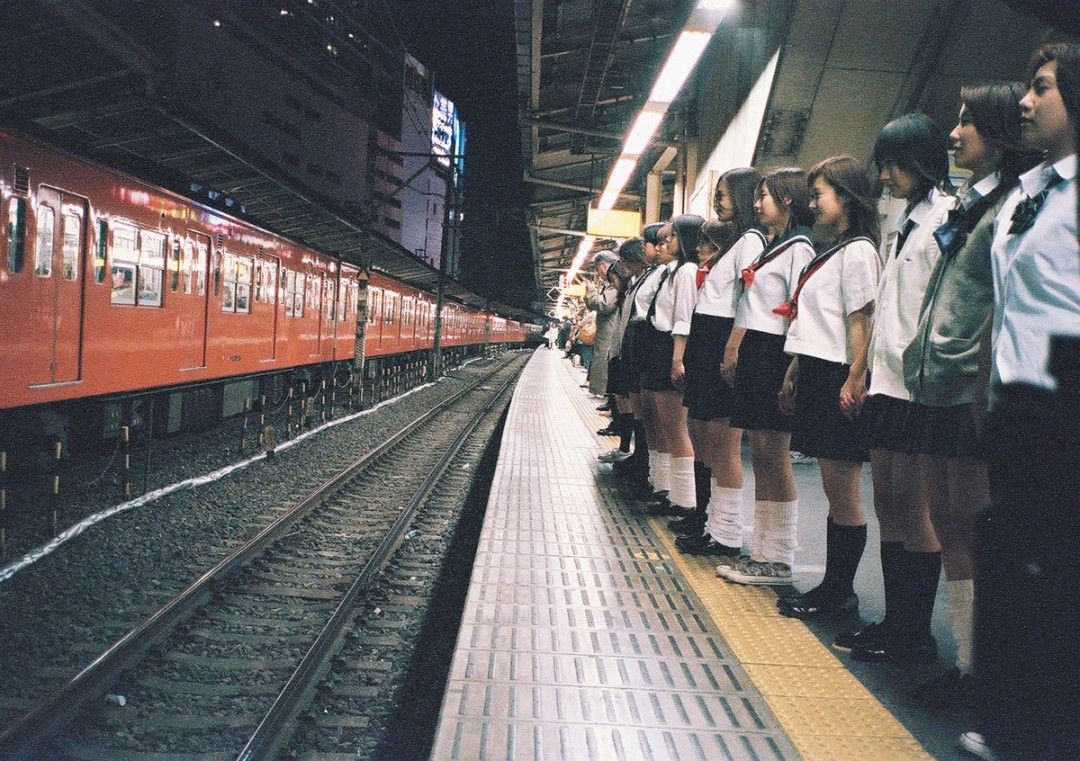Suicide Club (Sono Sion, 2001)

Don’t try suicide
Nobody’s worth it
Don’t try suicide
Nobody cares
Don’t try suicide
You’re just gonna hate it
Don’t try suicide
Nobody gives a damn
Suicide Club opens with a montage of the city at night, documentary realist footage of pedestrians moving through Tokyo, on and off of trains and through stations, scored to a peppy martial beat. Then, in a dreadful instant, the familiar symphony of a city turns to horror as 54 teenaged girls leap in unison from a subway platform in front of an oncoming train, a cataclysm of squished heads and bloody spray. Thus Sono Sion begins his first major film, after a more than decade of partially successful experiments. He fashions a unique and uneasy blend of psychological realism and exploitation horror: a serious exploration the psychoses of modern society punctured by a black absurdity; a delicate balancing act interrogating humanity’s darkest urges while celebrating the joy of primal cinematic sensationalism.
The opening is followed by a textbook suspense sequence: disappearing nurses and a befuddled night watchman, tension built solely with darkness and sound, as skillfully crafted as any ghost tale. Then the film switches gears into a detective story, as a handful of police investigate a series of possibly connected suicides. The cops are aided by an anonymous hacker, who hints at a website apparently connected to the deaths. Mysterious clues are discovered and one cop becomes intrigued by a female witness, while another returns home each night to his loving family. Each of these characters, the two cops, the hacker, the witness, even the nightwatchman, believe themselves to be the protagonist of a different film, and each leads to a different conclusion about the crime (the nightwatchman encounters ghosts, the hacker stumbles into a psychotic glam gang led by an animal-murdering singer with a Manson complex, one cop fails to resolve the contradiction between work and family while the other’s vision of himself as the hero in an offbeat romantic drama is rejected by the object of his affection). The witness comes the closest to understanding what is at work, but her investigation, involving a cryptic series of clues left by a highly popular tween girl band, doesn’t appear to lead any kind of logical solution, a nullity reinforced by the refrain repeated by the child who may lead the cult she discovers: “There is no Suicide Club.” Taking the self-negation of Fight Club one step further: you can’t talk about it, it doesn’t even exist.
Characters are repeatedly asked what connection they have to their selves in a film whose disparate parts never quite hang together in the way we’re taught to expect. The film’s most harrowing sequence doesn’t have any causal relation at all to the broader mystery. A gang of school kids leap to their doom in a copycat suicide not out of any brainwashing or mind-blowing koan, or demonic possession, but simply as a result of a snowballing peer pressure. Infected by the idea of suicide, the virtual manifests itself with a bloody thud. What Sono has captured here is the lunatic spirit of the age. Suicide Club is one of the great expressions of 21st century psychosis, along with films like Southland Tales, Mountains May Depart, and The Midnight After. Films that actively resist the demands not just of traditional narrative or tastefulness, but fully embrace the anti-rationality of the hyper-real. Where an idea, a virtual concept, can become tangible and malignant and pop music will destroy, or save, us all.
